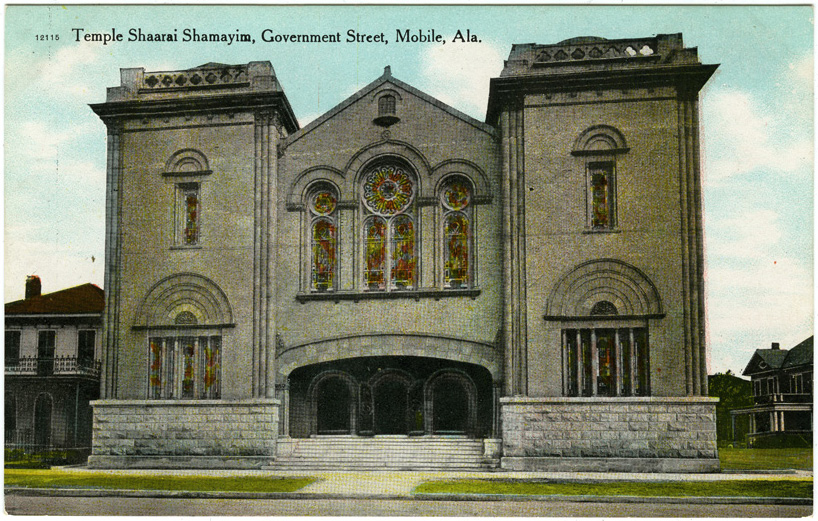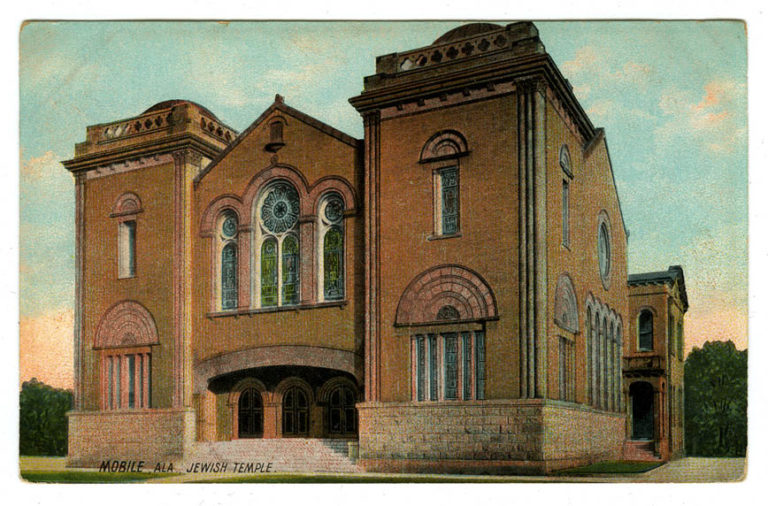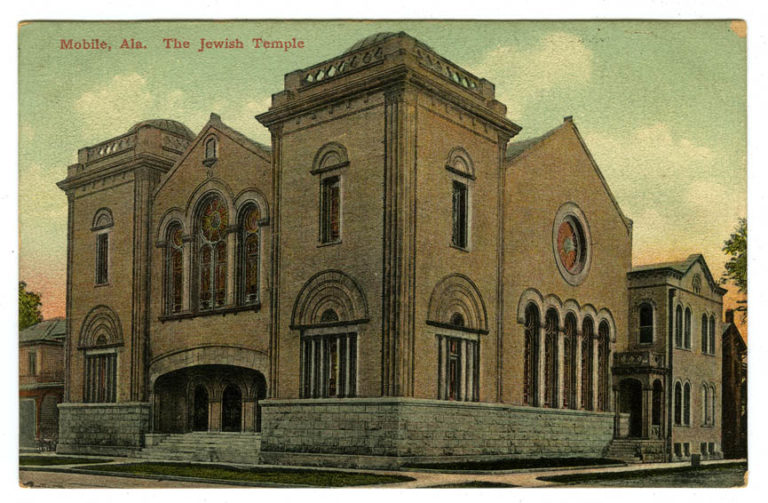5.9 Mobile, Alabama
Congregation Sha’arai Shomayim, Government Street, SE corner of Government and South Warren streets
Architect unknown, 1907
Publisher and publication date unknown
On June 6, 1906, members of Congregation Sha’arai Shomayim (Gates of Heaven) in Mobile, Alabama, laid the cornerstone for their new synagogue. Alabama’s lieutenant governor, Russell Cunningham, gave the keynote address. The temple was dedicated a year later. The design was big and bold, but more like a fortress than a welcoming community home. Two massive corner towers framed an entrance that was recessed into a deep niche beneath a wide low arch.
In 1844, Mobile’s Jews founded Sha’arai Shomayim as Alabama’s first congregation. By 1846, it boasted 50 members, who worshiped in a former church. In 1853, they constructed a new wooden building on Jackson Street that was destroyed by fire in 1856, then rebuilt on the same site as a brick stucco-clad classical temple-style building completed in 1858.
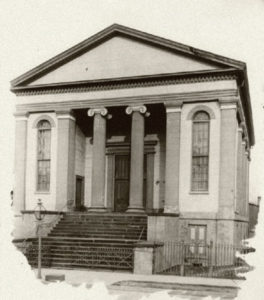
Sha’arai Shomayim embraced Reform Judaism and, in 1873, became a charter member of the Union of American Hebrew Congregations (UAHC), maintaining a close relationship with Rabbi Isaac Mayer Wise, founder of UAHC and Hebrew Union College. The congregation expanded from 90 members in 1895 to 175 members in 1910, and a larger building was needed. The cornerstone was laid at a site on Government Street on June 6th, 1906; the new temple was dedicated in 1907.
By 1894, Eastern European Jewish immigrants were numerous enough in Mobile to found Ahavas Chesed (Lovers of Mercy) as an Orthodox alternative to Sha’arai Shomayim. The age-old process of congregation-forming repeated itself. Members gathered at different homes to pray, and for the High Holy Days rented space, in this instance from the German Relief Hall. In 1908, Ahavas Chesed bought a house at Conti and Warren Streets for synagogue use. The congregation quickly outgrew this space and built a new synagogue on the same site. The cornerstone was laid on December 10, 1911, and the Jewish mayor of Mobile, Lazarus Schwarz, spoke at the ceremony. The synagogue opened for regular worship on March 31, 1912.
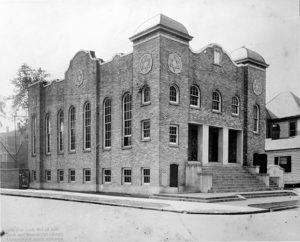
The style of the building was not unlike that of its Reform counterpart. Ahavas Chesed also has notable corner towers. It was approached on axis and entered via impressive stairs from the street. The sanctuary was set above a half basement, which contained administrative, educational, and social spaces. Separate galleries for women were reached by stairways in the towers.
Sha’arai Shomayim and Ahavas Chesed were located downtown, only one block apart. After the Second World War, Mobile’s Jews began moving to the city’s western suburbs. Both congregations soon followed. In 1952, Sha’arai Shomayim engaged architect T. Cooper Van Antwerp to design a new synagogue on Springhill Avenue. Groundbreaking took place on February 21, 1954. Ahavas Chesed followed Sha’arai Shomayim, building a new synagogue at Dauphin and Hannon Streets in 1956.
